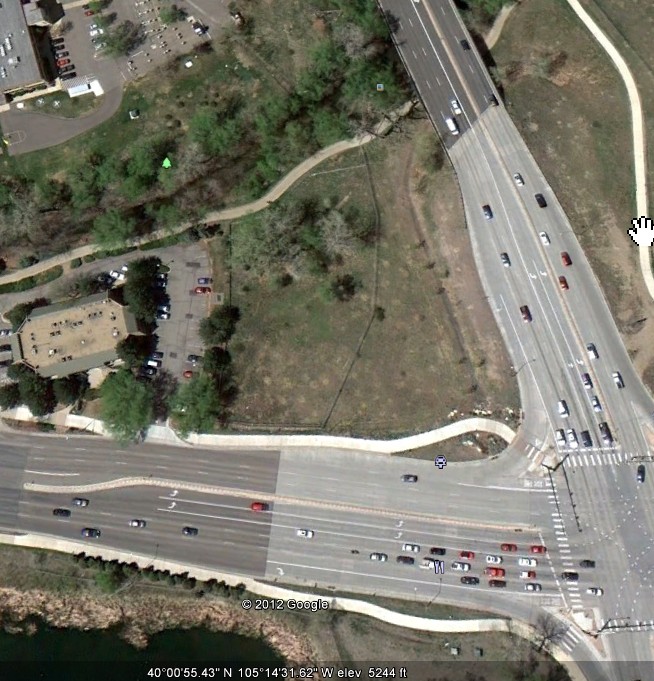Temperatures in Boulder have not increased for 60 years, yet the University of Colorado has obtained $800,000 to study how global warming has affected the local rodents. Perhaps the fat furry rats are teleconnected to Yamal?
The massive grant — from the Division of Environmental Biology at the National Science Foundation — is designed to give the researchers three years in the field to try and figure out how climate change is altering prairie dog habitat and how the rodents are responding to those changes. The study also will examine the interactions between native and non-native plants, including whether new species are taking up water used by the native variety.
Heather Swanson, Boulder’s wildlife ecologist, said some of the changes reported in recent years include loss of topsoil and changes in plant species where prairie dogs can be found. One of the primary questions is whether those changes are causing prairie dogs to change their habits, including being more active during the winter — which can lead to soil erosion after the rodents eat plants to the bare ground.
“I’m concerned that our management plan has not been informed by science that would look at what’s happening on these fragmented parcels” of open space, Wilson said. “We’ve seen some impacts that are disturbing, where (prairie dogs) totally defoliate these areas. We need to understand why that’s happening so that we can manage our grasslands better.”
CU to study impact of climate change on Boulder prairie dogs – Boulder Daily Camera
Let me save the taxpayers almost a million bucks and complete the study in the next 30 seconds.
Boulder’s most famous Prairie Dog town is at the corner of Arapahoe and Foothills. Both roads are about eight or nine lanes wide at the intersection. If you look closely at the Google Earth image below, you can see dozens of circular Prairie Dog mounds in an overpopulated village of potential Bubonic Plague carriers. The animals are boxed in, their natural predators have been nearly eliminated, and they are protected by law.
The little rats are overpopulated and they eat all the grass.



“Perhaps the fat furry rats are teleconnected to Yamal?”
I gotta clean my screen……should be carefull of coffee sipping when reading a new post. Good one.
Whatever!
Perhaps they are corrrect about the little rats being affected by climate change. They just forgot one word – micro – as in they are affected by micro-climate changes caused by roads, buildings, etc. I am sure it was just a type-o.
I friend of mine owns and operates a small-ish (about 250 head) cattle ranch in northeastern Colorado. A couple ears ago he was checking out some prairie dog mounds that had mysteriously materialized on his property (he said that prairie-dog activists in places like Boulder often illegally “relocate” prairie dogs on land in sparsely-populated areas like his ranch). That prompted me to ask him something that I’d always wondered about: why do ranchers dislike prairie dogs so much? Was it because — as I’d heard — horses would break their legs when they stepped into the rodents’ holes? He said that he’d heard of that happening, but had never seen it happen, and didn’t know anyone who’d ever had that happen to one of their horses. (Apparently most horses aren’t quite that stupid.) “No”, he said, “the reason ranchers dislike prairie dogs so much is that if left alone, they will totally destroy the prairie because unlike other herbivores, they eat the vegetation all the way to the ground and will even eat it below ground level. If left uncontrolled, they will destroy the prairie, which will take decades to recover.” So apparently, ranchers have known for at least a couple hundred years what citified eco-warriors need $800,000 of taxpayer money to figure out.
edit: A couple ears ==> A couple years
If the prairie dogs are defoliating an area, perhaps there are too many of them? Target practice, anyone? We need more coyotes and such. Are they good to eat?
Like my rancher friend mentioned (in my comment above), defoliating an area is just the modus operandi of prairie dogs. It has nothing to do with there being too many of them, which would simply have the effect of the colony collapsing due to starvation. If left unchecked, a prairie dog town will grow and grow, defoliating an ever-expanding
area.
There is a huge (about 200 yards by 100 yards or so) prairie dog town in Louisville, Colorado (just a few miles from Boulder) on the north side of Cherry Street about a mile east of McCaslin Blvd. Every so often live traps appear and the colony is thinned out. I’ve often wondered where the trapped rodents end up. On my friend’s or someone else’s ranch perhaps? (Where they’re unceremoniously dispatched as soon as they’re discovered. Target practice, indeed.)
“The massive grant […] is designed to give the researchers three years in the field to try and figure out”
Make sure you don’t run over the researchers at that crossing.
Reblogged this on Climate Ponderings.
This sounds like welfare for academics. It must be embarrassing at parties to have to explain that you research the effect of climate change on prairie dogs. The world shattering importance of this research is plainly evident. What’s the national debt now?